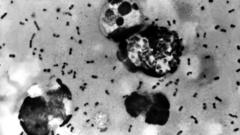In an effort to understand the historical landscape of human health, a team of scientists has embarked on an ambitious genetic study, mapping the emergence of 214 diseases over the past 37,000 years across Europe and Asia. As contemporary society grapples with pandemics like COVID-19, researchers are seeking insights from ancient pathogens.
While modern pathogens such as HIV, Zika, and SARS-CoV-2 have made significant global impacts recently, historical accounts, like the Plague of Athens described by Thucydides in 430 B.C., remain murky regarding the underlying causes. The ongoing challenge has been identifying the specific viruses or bacteria responsible for such historical epidemics.
However, three decades of advancements in genetics have provided new methodologies for analyzing ancient DNA. This latest study highlights the work of researchers who examined the remains of 1,313 individuals, allowing for a comprehensive view of how different diseases rose and fell over millennia.
The findings reveal an array of pathogens present in the earliest remains studied, which belonged to hunter-gatherers. These individuals carried multiple infectious agents, including hepatitis B, herpes simplex virus, and Helicobacter pylori, showcasing the diverse nature of human diseases throughout ancient history.
The implications of this research extend beyond mere historical curiosity; they provide clues for modern-day epidemiologists and public health officials, facilitating a better understanding of how diseases have evolved and potentially preparing for future health crises. The vast scope of the study signifies a significant leap in understanding our genomic history and the persistent fight against infectious diseases.














